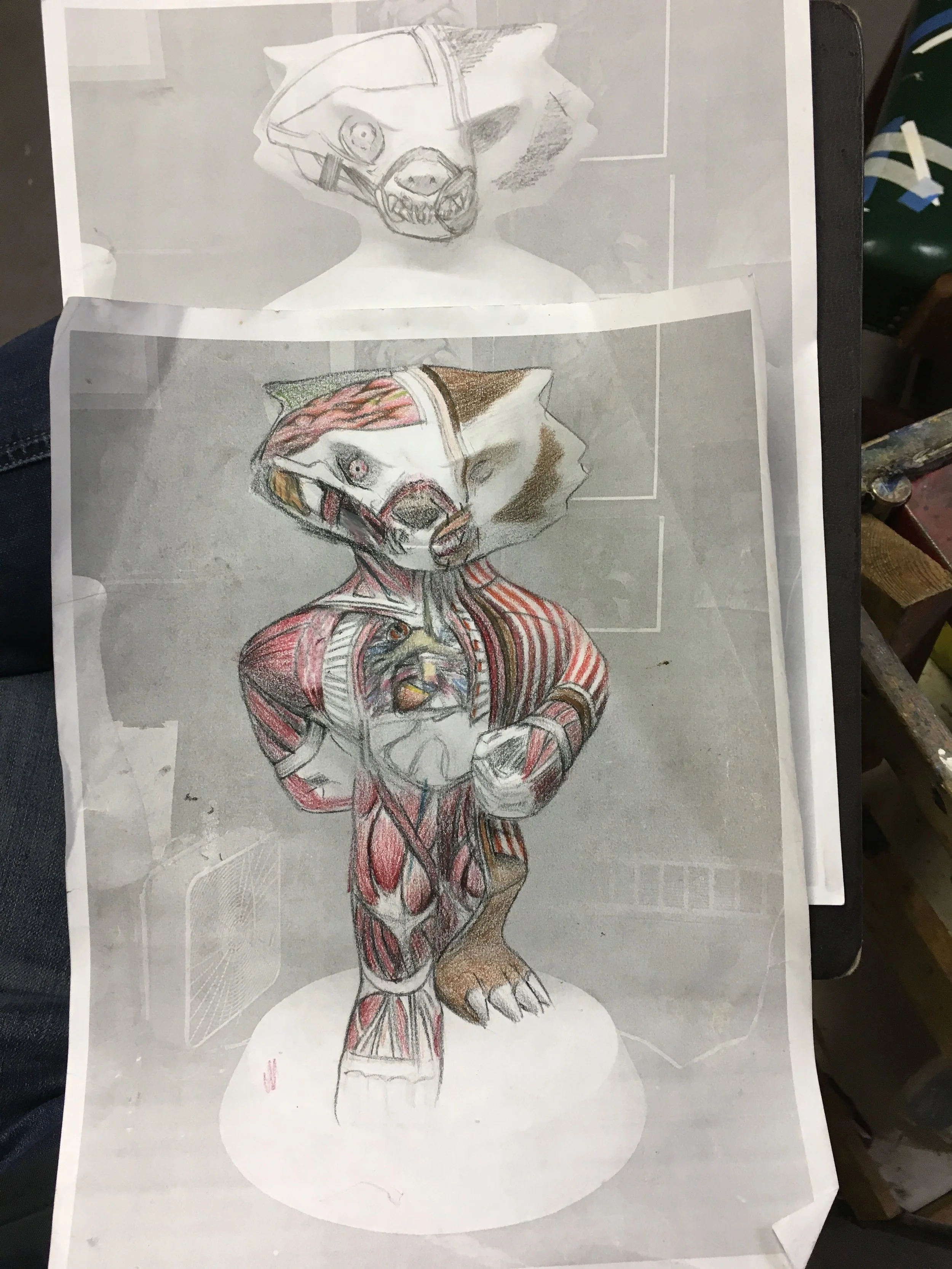Bucky on Parade
In the winter/spring of 2018 I participated in a citywide project titled Bucky on Parade. Artists were commissioned to each paint a 6‘6“ tall fiberglass statue of the UW Madison mascot, Bucky Badger, and businesses and other sponsors chose from the artists' proposals, with the proceeds going to different nonprofits. The statues were then placed all over town for the duration of the summer, and then in the fall were sent to their final locations. My statue is on display outside Science Hall (500 N Park St.) through September, when it will go to its final home, the UW Hospital. The project took much longer than I anticipated, and I spent a lot of time studying anatomy, and creating different studies as to how to present the most accurate, skillful, and beautiful rendition of what the inside of the mascot might look like. I spent a total of 350 hours on the project, and my stellar student/assistant, Sarah Gerg (@sarahsketchz), spent an additional 100 hours on it. Below is the finished product, along with some progress shots.
The finished product, before it received it's coat of gloss varnish
This was the other of the two designs that I submitted, which did not get picked up by a sponsor.
This is the original design that I submitted as my proposal. I quickly discovered that depicting the bones to read cohesively from multiple angles on a three dimensional surface would be challenging, and decided to do away with them. This version also depicted each of the anatomical features to be labeled in latin.
I discovered some 18th century lithographs, and was inspired by how they depicted human anatomy. This is the final sketch before I began drawing on the actual sculpture, though I deviated a bit from this design, the main difference is the sternomastoid projecting into the interior, as well as the exposed left hand and half exposed left leg.
I am accustomed to making color studies for projects like this, but eventually discovered that the three dimensional nature of the project made it difficult to rely on them.
The finished charcoal sketch. This was the most difficult part of the process, as this is where all of the decisions had to be made, since its much easier to make changes in charcoal than once I move in with paint. This charcoal sketch took a total of approximately 80 hours.
I began with the exterior, since it contained both my darkest darks, my lightest lights, and my most chromatic parts. Also, these color decisions were already made for me, whereas for much of the anatomy I had more leeway with the colors, so I could this as context for my other color/value decisions.
Saving the most difficult parts until last, so that I had as much context as possible when making color decisions about the interior. All of the muscles, as well as the opening in the back, were painted by Sarah Gerg.
I found it helpful to paint a grisaille underpainting, which enabled me to first focus just on values, and then work on top of that with color.
Again, the back was first painted in grisaille, then in color. This was also done by Sarah.
Close up of the almost completed chest
Science Hall, the only building on campus with punctuation

















